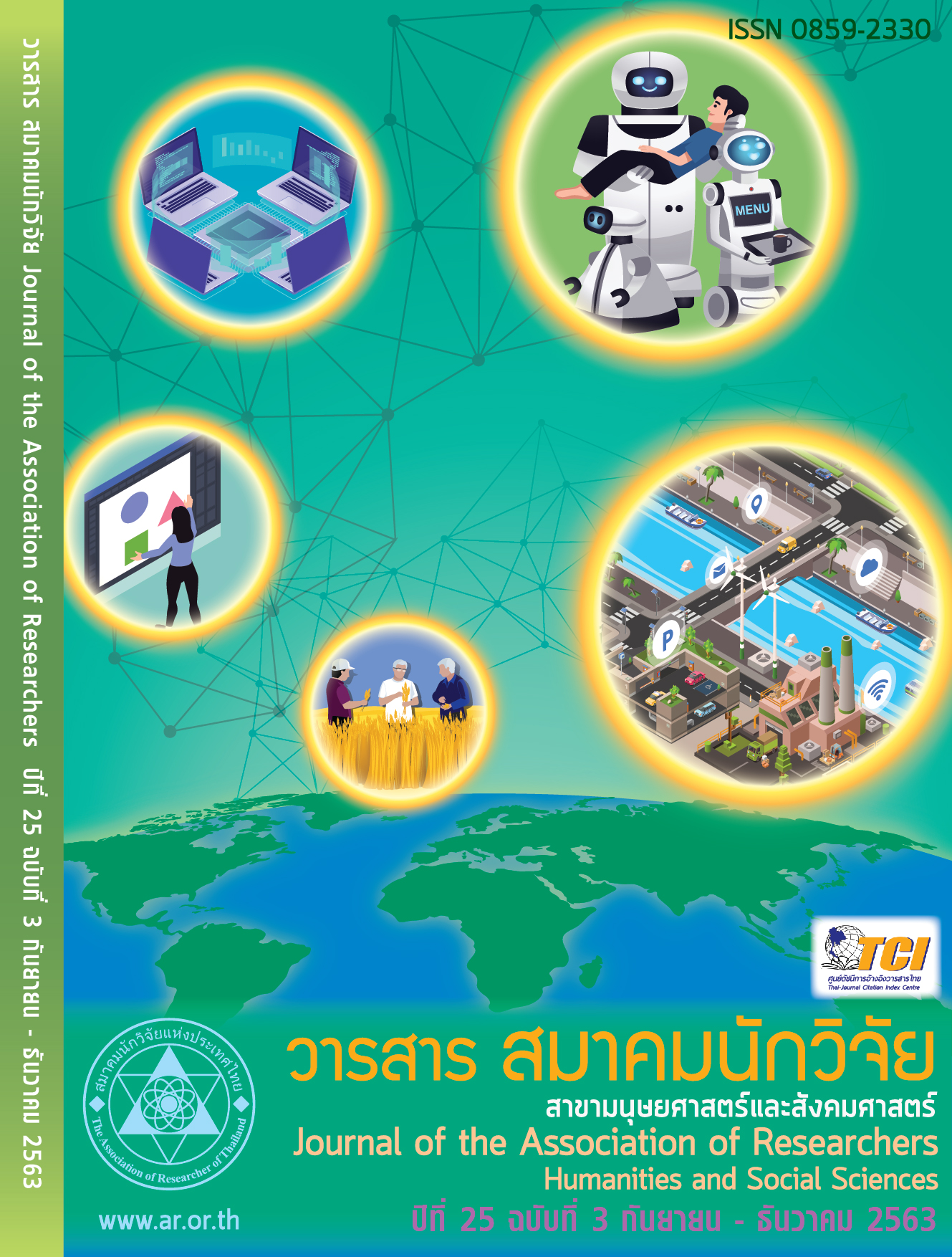The prototype play area in child development centers of Subdistrict Administrative Organization in four regions.
Main Article Content
Abstract
This research article was purpose to raise awareness among parents, guardians, and teachers as well as to ensure sustained benefits for children from the prototype play area. This research is carried out in a form of a cross-section by doing a survey, focus group, and collecting information from parents, guardians, teachers, staff, and Public Health staff in four child development centers. It covers four regions under Education Sandbox Act B.E.2562, that is, Wat Bhuddhakanchananimit Child Development Center, Kanchanaburi, Satun Town Municipality Child Development Center, Satun, Huachang Child Development Center, Srisaket and Yumueangklang Child Development Center, Rayong. In summary, it can be demonstrated as follows; (1)Four components enabling child development centers to follow the prototype play area; Play worker: Play process: Play space (2) In order to maximize the play process, the playworker guideline must be distributed to parents, guardians, and teachers enabling them for understanding the prototype play area. This can be done under the 3F concept which is ‘Family’: encouraging children to play ‘Free’: free playing that child-centered anytime and anywhere and lastly ‘Fun’: playing generates fun and happiness Recommendations for the prototype play area as follows;(3)The prototype play area leads to a sustainable community via cooperation between families, child development centers/ public health service units and communities
Article Details
บทความที่ปรากฏในวารสารนี้ เป็นความรับผิดชอบของผู้เขียน ซึ่งสมาคมนักวิจัยไม่จำเป็นต้องเห็นด้วยเสมอไป การนำเสนอผลงานวิจัยและบทความในวารสารนี้ไปเผยแพร่สามารถกระทำได้ โดยระบุแหล่งอ้างอิงจาก "วารสารสมาคมนักวิจัย"
References
Reference
Arthitaya Semoum,(2015). Creative Space for Child Development in Hardship Condition: Case Study in Wat Duang Khae Community, Bangkok. Thesis. Thammasat University.
Chayutsahakit,(1981). Activity that supports conscience development. Bangkok Chulalongkorn University.
Eiumsupasit, (1987). Behavioral development in the confidence of children. Kasembandit journal a year of 6, 1st edition. (Jan- Jun. 2005). P.20-24
Department of Health, Ministry of Public Health. (2017) Strategic plan, Development of a system to promote health and environmental health According to the National Health Development Plan During the 12 the National Economic and Social Development Plan (2017 - 2021).
Decisions of the Comptroller General of the United States, P- 66 October 1, 1986 – September 30, 1987
Johnson and others, (1987). Group theory and group skills (3rd ed.). Prentice-Hall, Inc. In D.P. Fromberg & D. Bergen (Eds.), Play from birth to twelve (2nd edition). New York: Garland
Jittnan Dechakupt et.al.,(2015) Plays in Thai children and family: The character and factor which influence elementary children's development. Research. Sukhothai Thammathirat Open University. Nonthaburi.
Johnson, James E., Christie, James F., Yawkey, Thomas D.: (1987) Play and Early Childhood Development First Edition Publisher: Scott Foresman & Co; First Edition, First Printing (March 1, 1987)
Lekha Piyajjariya. (1981). Play to learn. Bangkok. Chulalongkorn. University Press. National Institute of Child Health Department of Health 2020.
Pattanapong and Kaewkhankhang. (2018)Education report which influences Thai elementary school children 6th edition. Bureau of Health Promotion.
Poonsipa, (2017). Development Activity for 21st-century elementary school children. Elementary department. Education faculty of Surin Rajabhat University. Journal of MCU Peace studies year of 32, first edition. Education faculty of Kasetsart University.
Pantip,(1987), Theory of Developmental Psychology. Chulalongkorn University Press. Bangkok. 1st edition.
Parten, M. B. (1932). Social participation among pre-school children. The Journal of Abnormal and Social Psychology, 27(3), 243–269.
Rubin, K. H., Fein, G., & Vandenberg, B. Play. In E. M. Hetherington (Ed.), Handbook of child psychology (Vol. 3)" Social development. New York: Wiley, 1983.
Sumon Amornwiwat et al. (1991). Anthropological Study of Child Raising According to Thai Ways of Life. Bangkok: Faculty of Education, Chulalongkorn University.
Sucha Chanaim. (1995). Child Psychology. Bangkok. Thaiwiwattanapanitch. 2nd Edition.National Statistical Office. Establishing a survey of the situation of children and women in Thailand (2019, Public Relations Group, Secretariat of the Department.
Sigmund Freud, The International Journal of Indian Psychology P -1 (P 1):1 - 8 (1856-1938 )
Thitikorn Tophothai, (2018). Play to get the story. Ministry of Public Health and Unicef For every child. Mahidol University.
เว็บไซต์https://th.rajanukul.go.th สืบค้นเมื่อ 20 พฤศจิกายน 2563
Reference translated in Thai
Niramon Chayutsakij. (1981) Playing for Intellectual Development, Bangkok: Chulalongkorn University.


